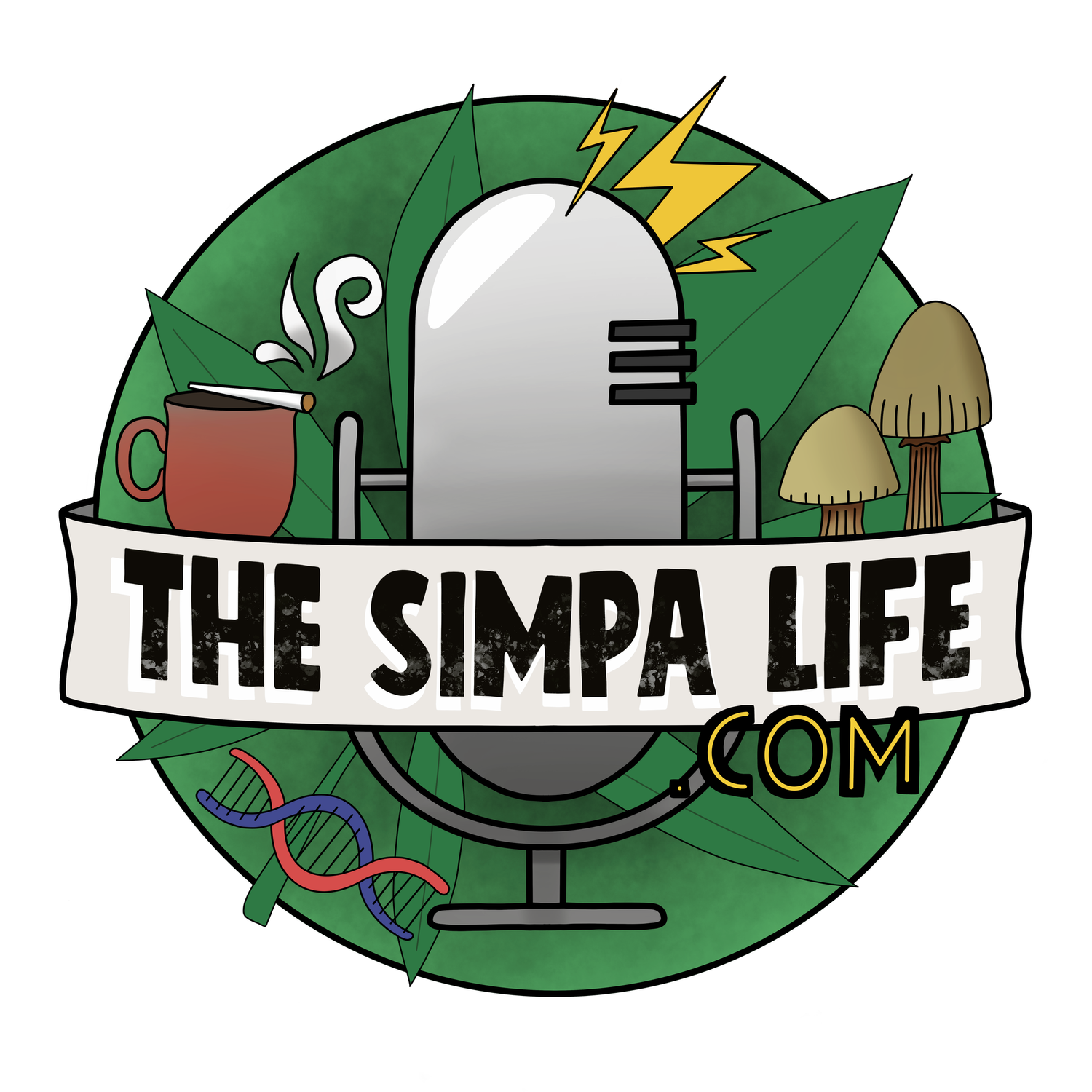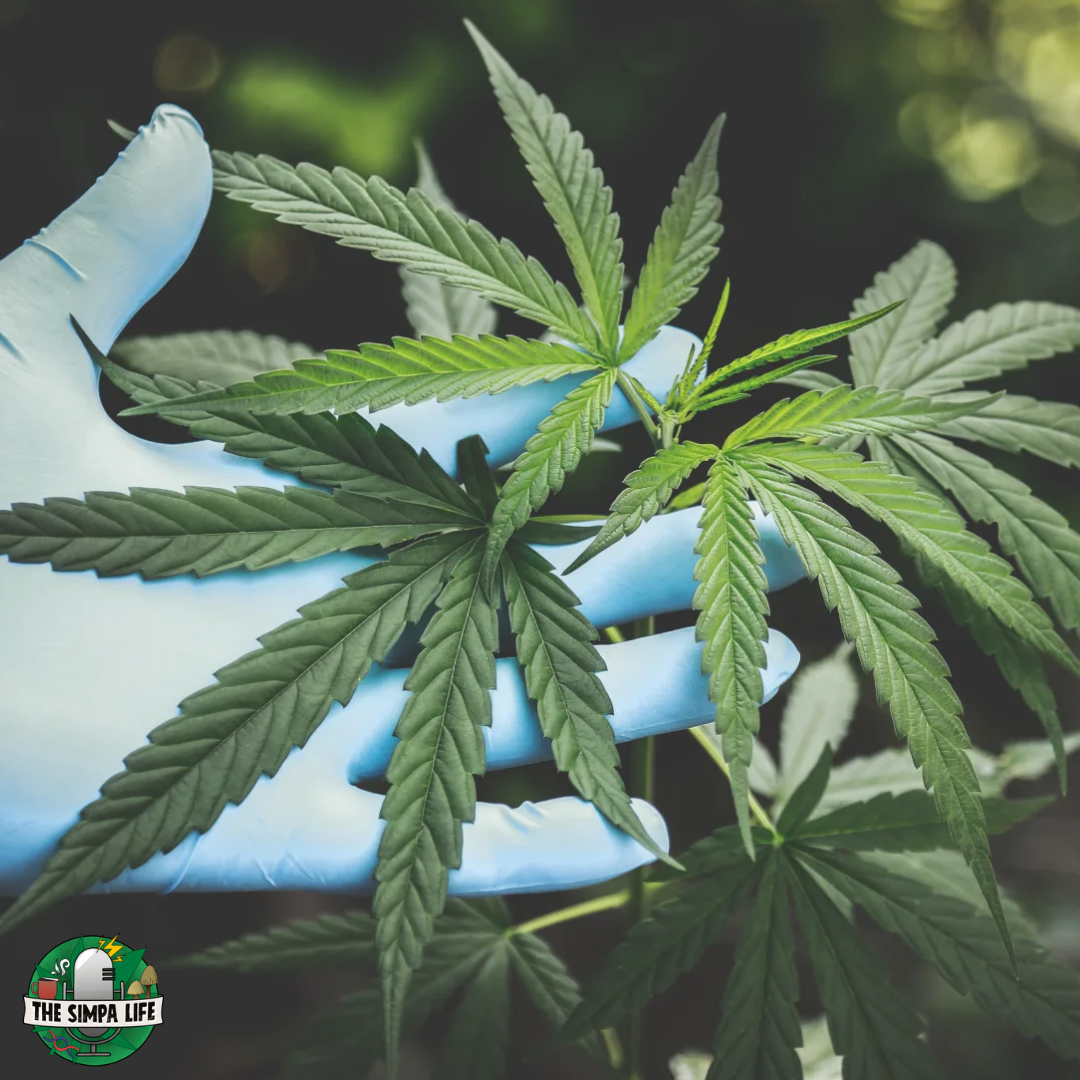Last Week In Weed Issue 58
Published May 8th 2023
In this issue of Last Week in Weed. We look at another new flawed study exploring the link between cannabis consumption and the onset of Schizophrenia. A new study found cannabis beneficial in reducing pain for cancer patients, and finally. We travel to New South Wales in Australia for the annual Nimbin MardiGrass Festival.
The first story we will be looking at this week comes from the United States of America and the publication of a new study from the government-funded National Institute of Health (NIH). The study published in the Psychological Medicine journal attempts to draw a link between young male cannabis consumers deemed to have the contentious condition ‘Cannabis-use Disorder’ and the development of Schizophrenia.
The study titled ‘Association between cannabis use disorder and schizophrenia stronger in young males than in females’ claims to have found ‘strong evidence of an association between cannabis use disorder and schizophrenia among young men’. A stark contrast with the study, we looked at in Last Week in Weed issue 57 that found ‘no significant association between cannabis consumption and psychotic disorders’, which includes Schizophrenia.
The researchers analysed longitudinal data from the health records of 6.9 million Danish citizens between 1972 and 2021 using statistical models. The study claims that an estimated 30% of new Schizophrenia cases in young men aged 21-30 could have been avoided if those individuals avoided consuming cannabis.
The study purports that the onset of an estimated 15% of new cases of Schizophrenia in men aged 16-49 in 2021 could have been avoided/delayed if those individuals abstained from consuming cannabis. This is contrasted with just 4% of women in the same age range over the same period.
Right, let’s break this down and see if we can understand what this study means. Firstly, let’s look at the controversial condition ‘Cannabis-use Disorder’. According to The Diagnostic and Statistical Manual of Mental Disorders (DSM-5) published by the American Psychiatric Association (APA) ‘Cannabis-use Disorder’ is ‘A problematic pattern of cannabis use leading to clinically significant impairment or distress, as manifested by at least two of the following, occurring within a 12-month period’.
Cannabis is often taken in larger amounts or over a longer period than was intended.
There is a persistent desire or unsuccessful efforts to cut down or control cannabis use.
A great deal of time is spent in activities necessary to obtain cannabis, use cannabis, or recover from its effects.
Craving, or a strong desire or urge to use cannabis.
Recurrent cannabis use resulting in a failure to fulfil major role obligations at work, school, or home.
Continued cannabis use despite having persistent or recurrent social or interpersonal problems caused or exacerbated by the effects of cannabis.
Important social, occupational, or recreational activities are given up or reduced because of cannabis use.
Recurrent cannabis use in situations in which it is physically hazardous.
Cannabis use is continued despite knowledge of having a persistent or recurrent physical or psychological problem that is likely to have been caused or exacerbated by cannabis.
Tolerance, as defined by either of the following: a. A need for markedly increased amounts of cannabis to achieve intoxication or desired effect. b. A markedly diminished effect with continued use of the same amount of cannabis.
Withdrawal, as manifested by either of the following: a. The characteristic withdrawal syndrome for cannabis (refer to DSM-5 for further details). b. Cannabis (or a closely related substance) is taken to relieve or avoid withdrawal symptoms.
The severity of ‘Cannabis-use Disorder’ is quantified by the presence of a certain number of the above symptoms.
A mild case of ‘Cannabis-use Disorder’ is defined as the presence of 2-3 Symptoms
A moderate cannabis use disorder is defined as the presence of 4-5 Symptoms
A severe cannabis use disorder is defined as the presence of 6 or more Symptoms
There are a few issues with this characterisation of ‘Cannabis-use Disorder’. The NHS and many other health services around the world record all cannabis consumption as ‘drug abuse’ even when the individual doesn’t report any negative consequences of their consumption - skewing the data sets. It fails to understand the direction of the relationship between mental health difficulties and the consumption of cannabis.
The oversimplification of this relationship fails to take into consideration the severe impact of consumers being continually vilified, demonised, and persecuted for consuming a substance they find beneficial to their health, wellness, and daily lives. Cannabis has after all been shown to help reduce, treat, and suppress the symptoms of common mental health conditions such as Anxiety, Depression, PTSD, and ADHD.
‘Cannabis-use Disorder’ fails to differentiate between pure cannabis consumers and those that mix their cannabis with tobacco. A substance long established to cause psychosis and recognised as one of the most difficult habit-forming substances to quit. It is estimated that around 75% of Europeans mix tobacco with their cannabis which could explain the ongoing disparity between European and American studies looking at the effects of cannabis on its consumer’s mental health.
It is worth noting here that many of the reported symptoms of cannabis withdrawal supposedly linked to ‘Cannabis-use Disorder’ are the same as those caused by the cessation of tobacco, such as persistent strong cravings, increased anxiety, depression, irritability, and difficulty concentrating and sleeping.
We know that the polydrug use of Cocaine and Alcohol creates a new psychoactive compound in the liver of the consumer called Coca-ethylene. This new compound has a greater euphoric effect, longer duration, and higher rate of dependency, and can increase its cardiotoxicity severalfold. I believe that a similar mechanism is playing out here with cannabis consumers that mix their herbs with tobacco.
Schizophrenia is believed to affect around 1% of the global population. The typical age of onset for males is in the late teens and early twenties and slightly later in females. It is believed that individuals that suffer from Schizophrenia are genetically predisposed to the condition and would develop the condition regardless of external factors. Most individuals recover from Schizophrenia and symptoms generally improve with age, although some may suffer temporary relapses with the reoccurrence of some symptoms.
The exact causes of Schizophrenia are still unknown to modern science. However, decades of research seem to indicate that its onset in adulthood is caused by a combination of epigenetic, and socio-economic factors. Interestingly, a 2010 University of East London study found that “Poverty is more strongly related to Schizophrenia than any other mental health problem”.
Several previous studies have observed a relationship between heightened states of anxiety, distress, and worry and the onset of a latent Schizophrenia episode. So it isn’t appropriate to claim that cannabis consumption alone can cause Schizophrenia or any other transitory psychosis-type illness. I agree that it could be claimed that cannabis consumption in individuals with a latent genetic tendency towards Schizophrenia may hasten its onset.
This kind of cannabis and psychosis metadata studies lack insight into the myriad of other factors and stresses present in an individual’s life. They do not consider that cannabis supply chains can be contaminated with synthetic cannabinoids, artificial terpenes, and toxic cultivation additives. They don’t control for tobacco consumption and other co-morbid factors. They also fail to even entertain the fact that individuals with undiagnosed mental health conditions are likelier to self-medicate with currently criminalised and stigmatised substances.
The biggest single argument that proves there is no link between cannabis consumption and Schizophrenia is the fact that the global rate of Schizophrenia has remained at about 1% consistently despite the prevalence of cannabis consumption increasing greatly around the world over the last century.
One final thing to consider here is why the NIH, a US government-backed institution, conducted this kind of research on a foreign population. Could it be because if it carried out this research domestically it wouldn’t be able to make such outlandish claims about cannabis and Schizophrenia?
Well, a 2023 US study published on the JAMA Network, examined data from 63 million US citizens and found ‘no statistically significant changes in psychosis-related diagnoses or prescribed antipsychotics’ after states implemented legislation regulating limited access to cannabis for ‘medicinal’ and ‘adult use’.
Another US study from this year found that 78% of individuals surveyed said that consuming cannabis improved their mental health. In my opinion, this is evidence that prohibition, not cannabis, is responsible for the vast majority of unwanted and negative side effects experienced by a tiny percentage of its consumers.
New Study Finds Cannabis Beneficial To Cancer Patients
The second story we will look at this week comes from the Great White North and a new study from researchers at ‘The Medical Cannabis Programme in Oncology’ at Cedars Cancer Centre in Canada. The study, published in the BMJ Supportive & Palliative Care was conducted by researchers from McGill University in Montreal, Harvard Medical School in Boston, and the Royal College of Surgeons in Dublin amongst others.
Around a third of all cancer patients and two-thirds of terminal cancer patients experience moderate to severe pain. An estimated third of all patients still experience pain after taking the standard painkillers available to them. It’s this prevalence of pain that motivated this group of tri-national researchers from Canada, America, and Ireland to explore the effects of cannabis on the intensity of cancer patient’s pain.
The researchers looked at the pain levels of 358 adults currently living with cancer. The cancer patients were divided into 3 groups and given one of three cannabis-containing products. One group took a THC-dominant product, another consumed a balanced CBD/THC product, and the other took a CBD-dominant product.
The patient’s pain levels, symptoms, and total medications were monitored and patients were assessed every three months for a year. The study’s authors found that Cannabis “is a safe and effective complementary treatment for pain relief in patients with cancer” and that an equal balance of CBD and THC seems to be the most effective in reducing cancer patients’ pain levels.
"Our data suggest a role for medicinal cannabis as a safe and complementary treatment option in patients with cancer failing to reach adequate pain relief through conventional analgesics, such as opioids" – Study Researchers
This research follows another 2023 cannabis and cancer study from the University of Colorado Boulder that found that cannabis consumption reduced pain, improved sleep, and clearer thinking. The timing of these studies comes at a rather fortuitous time for GW Pharmaceuticals’ new owner and sugar daddy, Jazz Pharmaceuticals. The new multinational pharmaceutical conglomerate is currently conducting phase two trials of ‘Sativex’ in conjunction with chemotherapy. The three-year trial began with 230 patients at 15 NHS hospitals across the UK in the summer of 2022. While there have still only been less than 5 NHS cannabis prescriptions since 2018.
The formerly UK-government-backed ‘medicinal cannabis’ cartel had previously tried to get its highly profitable patented flagship product ‘Sativex’ accepted in the treatment of cancer in the UK. A failed 2018 trial conducted by GW Pharma had previously found that ‘Sativex didn’t work better than a dummy drug’. A 2021 trial looked at Sativex in conjunction with Temodal (Temozolomide) a common brain tumour drug and found that the oral spray drug ‘doesn’t cause too many side effects’. Not exactly gold star results.
So why aren’t these studies looking at cannabis treating cancer you ask? Well, in the UK we have a piece of legislation known as the 1939 Cancer Act. An archaic act of Parliament that now only outlaws the advertisement of alternative cures and treatments for cancer not approved by the state.
This antiquated legislation ensures that studies will only be able to research cannabis as a symptom-relief substance and not one to treat cancer directly. This is a shame because there is ever-growing evidence that cannabis can treat cancer itself by blocking cancerous cell growth, causing cancer cell death, and inhibiting the spread of new cancer cells.
The final story that we’ll look at this week comes from the tiny village of Nimbin, Australia and the 31st annual Nimbin cannabis festival. Every year on the first weekend of May the small town in New South Wales hosts a multi-day cannabis festival known as MardiGrass.
The town of Nimbin is home to just 1,800 permanent residents, but every year 1,000s of cannabis enthusiasts from across Australia and the world descend on the ‘Rainbow Region’ to celebrate cannabis culture and call for an end to prohibition.
The weekend-long celebration and carnival of cannabis culture featured cannabis education, hands-on workshops, a green cabaret stage show, a ‘Hemposium’ conference with dozens of public speakers, the annual march, and the cannabis fashion parade.
Other highlights of the weekend include live entertainment and comedy at the ‘Indica Arena’, the ‘Hemp Olympix’ at the ‘Sativa Stadium’, the annual joint rolling competition which was held in the town hall, and the MMMA’s or ‘MadiGrass Marijuana Music Awards’ where no song can last longer than 4 minutes, 20 seconds.
The first event took place in May 1993 following an earlier altercation with the police in March of the same year. The interaction with the constabulary was triggered when locals became outraged after discovering several undercover police officers attempting to entrap local cannabis consumers. A small crowd quickly formed and then chased the officers back to their station and pelted them with eggs.
Following concerns about the perception of the small town, a local street performer Bob Hopkins, suggested the idea of MardiGrass. So on May 1st 1993, Bob, dressed as a nun, led a small brightly coloured group of demonstrators, that would soon multiply to over a thousand strong, on a march to the local police station.
The protest attracted a lot of media attention that forced the police to avoid aggressively breaking up the jovial gathering. The subsequent ‘soft approach’ by the police led the marches organisers and locals to declare it a success and commit to holding the event annually until the war on cannabis consumers was ended.
In the years that followed the tiny township has come to be known as the ‘Australian Amsterdam’ and attracts cannabis enthusiasts from across the earth. Unfortunately, as cannabis remains prohibited for unprescribed non-medicinal consumption the local police force had a “proactive road-policing operation in relation to drug and alcohol driving" at the event.
In order to help combat the heavy-handed police operation the organisers have a team of sober volunteer drivers affectionately known as ‘doober drivers’ to transport attendees to and from the festival. Speaking about this year’s event, organising body president Michael Balderstone said that
“It's hard to believe we are still labelled as criminals as much as ever. Thirty years of loudly crying out about the mistake of banning the most useful plant in creation, and despite the experts now agreeing with us, there's still no let up on hunting down cannabis users.”
“Giant pharmaceutical companies are the only people allowed to grow nature’s best painkilling plants and we can only access them legally via a doctors approval. Cannabis and the opium poppy were in the majority of medicines only a century ago, now Big Pharma controls what medicine we are allowed to use and what not. Basically, we've lost the plot it seems on this issue of prohibition” I couldn't agree more Michael.
“MardiGrass is about enjoying life and the heaven we are standing in” MardiGrass organising body president Michael Balderstone
MardiGrass is believed to be the reason why the annual ‘Global Cannabis March’ or ‘Global Marijuana March’ takes place on the first weekend of May each year. Don’t worry if you missed this year’s march, the UK Global Cannabis March in Cardiff has been delayed thanks to the coronation and will take place this Saturday! (May 13th 2023)
Last Week in Weed Additional Story
There is one last story that I want to cover this week as a cautionary tale. A driver from Lancashire was stopped by police after they “had been sighted earlier smoking cannabis inside his car by a member of the public.” Stay safe out there folks!
Written By Simpa For The Simpa Life




